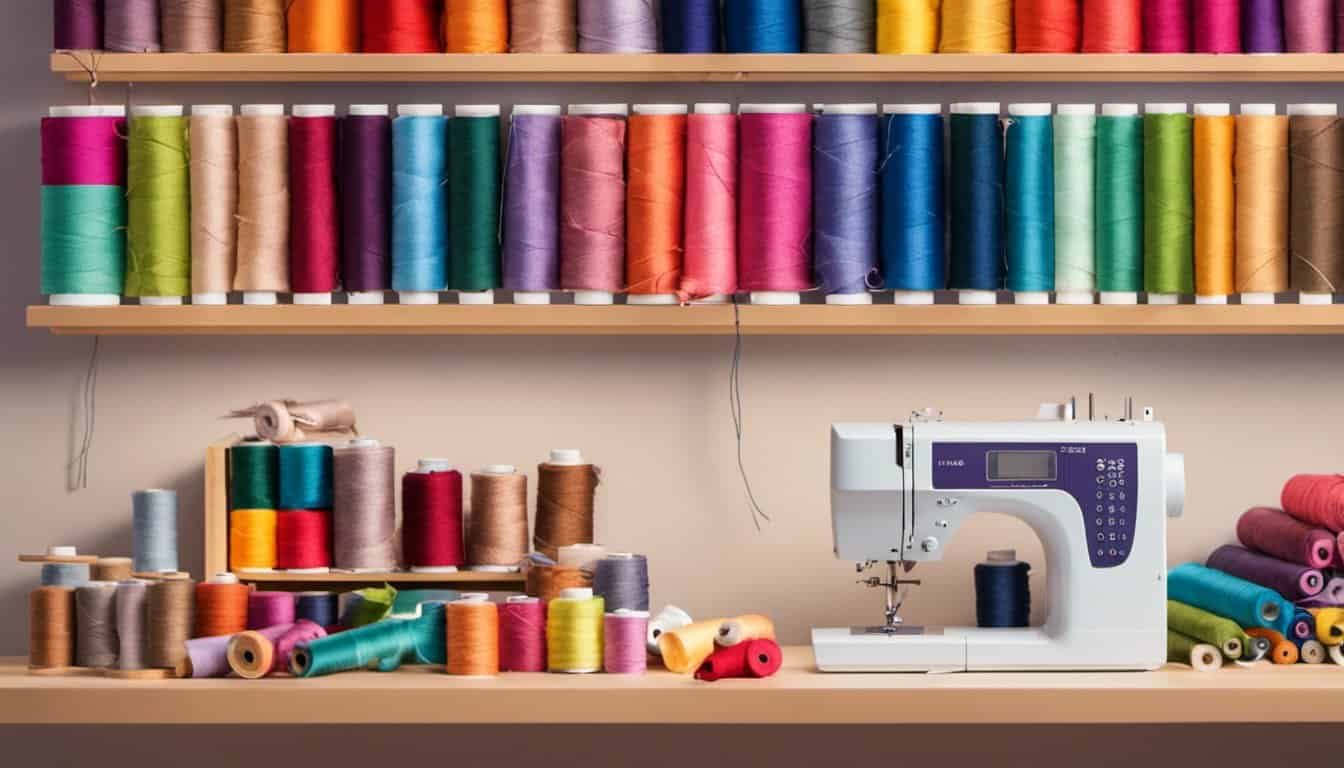Hand embroidery has always fascinated me with its timeless beauty and intricate techniques. Among the many stitches I’ve explored, the stem stitch truly shines for its grace and versatility. It’s the perfect choice for outlining shapes, crafting elegant lines, and adding detailed accents to your projects.
As I journeyed to master this classic stitch, I discovered tips and tricks that make the process enjoyable and rewarding. From selecting the right thread to perfecting my hand movements, each step brought me closer to creating stunning designs. In this article, I’ll share my experiences and insights on perfecting the stem stitch, helping you bring your embroidery ideas to life. Whether you’re a beginner eager to learn or an enthusiast looking to refine your skills, let’s dive into the art of the stem stitch together.
Understanding the Stem Stitch
The stem stitch stands out as a fundamental technique in hand embroidery, offering both simplicity and elegance. Its versatility makes it a favorite among both beginners and seasoned crafters.
History and Origins
The stem stitch traces its roots back to ancient embroidery traditions, commonly used in European and Asian textile arts. Historically, artisans favored this stitch for creating intricate outlines and floral designs due to its smooth, continuous lines. Its enduring popularity is evident in various cultural garments and decorative pieces.
Importance in Hand Embroidery
Stem stitch plays a crucial role in achieving detailed and refined embroidery work. It provides a secure and flexible foundation for outlines, enhancing the overall appearance of designs. Additionally, its ability to mimic natural lines makes it ideal for floral motifs and intricate patterns, allowing crafters to add depth and texture to their projects.
Materials and Tools
Selecting the right materials and tools sets the foundation for successful stem stitch embroidery. I rely on specific threads and needles to achieve precise and beautiful results.
Selecting the Right Thread
- Type: I prefer using cotton floss for its durability and versatility in various projects.
- Weight: Opting for a medium weight provides a balanced thickness suitable for most designs.
- Color: Choosing high-quality, colorfast threads ensures vibrant and long-lasting colors in my embroidery.
- Finish: Mercerized threads offer a smooth texture and enhanced sheen, ideal for detailed stem stitches.
Choosing the Appropriate Needle
- Size: I select needles based on thread weight, typically using size 24 for medium-weight threads.
- Type: Embroidery needles with a sharp point and large eye facilitate smooth stitching and easy thread handling.
- Material: Stainless steel needles resist corrosion, maintaining their sharpness over time for consistent performance.
- Shaft: A straight shaft needle aligns well with fabric edges, providing better control during intricate stem stitch patterns.
Mastering the Basic Stem Stitch
Mastering the basic stem stitch lays a solid foundation for your embroidery projects. Here’s how I perfect this essential technique.
Step-by-Step Instructions
- Prepare Your Thread: Cut an 18-inch piece of cotton floss, separate two strands, and tie a knot at the end.
- Start from the Back: Insert the needle from the back to the front at your starting point.
- Create the First Stitch: Bring the needle back up a short distance ahead, leaving a small loop.
- Form the Outline: Insert the needle inside the loop, then pass it down outside the previous stitch, keeping tension even.
- Maintain Consistency: Continue stitching, ensuring each stitch mirrors the last for a smooth line.
- Secure the End: Once you finish, bring the needle to the back, make a small knot, and trim any excess thread.
Common Challenges and Solutions
- Uneven Tension: Maintain consistent tension by holding the thread gently and avoiding pulling too tight.
- Inconsistent Loop Size: Keep loops small and uniform to ensure a smooth, even line.
- Thread Breakage: Use high-quality, colorfast threads to minimize breakage and enhance durability.
- Starting and Ending Stitches: Insert the needle at a slight angle and secure with a small knot to make transitions seamless.
Advanced Stem Stitch Techniques
Elevating your embroidery skills involves exploring advanced stem stitch techniques. These methods enhance your designs and add intricate details to your projects.
Adding Variations and Designs
Incorporating variations into the stem stitch enriches your embroidery. I use different thread thicknesses to create depth and texture. Alternating stitch directions helps achieve smoother curves and intricate patterns. Experimenting with color gradients adds dimension and visual interest. Incorporating small loops or knots can emphasize specific design elements, making your work stand out.
Combining with Other Stitches
Integrating other stitches with the stem stitch expands your creative possibilities. I often pair stem stitch with satin stitch to fill areas, providing contrast and balance. Using French knots alongside stem stitch adds texture to floral designs. Incorporating running stitches creates outlines and enhances the overall structure. Combining these stitches allows for more dynamic and detailed embroidery projects.
Tips for Perfecting Your Embroidery
Mastering the stem stitch involves refining techniques and avoiding pitfalls. Here are some strategies to elevate your embroidery skills.
Avoiding Common Mistakes
- Inconsistent Tension
Maintain even thread tension to prevent puckering or loose stitches.
- Uneven Stitch Lengths
Keep each stitch the same length for a uniform appearance. Use a ruler to measure if needed.
- Improper Thread Management
Prevent tangling by securing thread ends and keeping excess thread behind the fabric.

- Skipping Turns
Ensure smooth transitions by properly anchoring thread before changing direction.
- Using the Wrong Needle
Select size 24 embroidery needles for optimal control and ease of stitching.
Enhancing Your Projects
- Varying Thread Thicknesses
Combine different thread weights to add depth and texture to your designs.
- Incorporating Color Gradients
Use gradual color shifts to create a more dynamic and visually appealing pattern.
- Adding Additional Stitches
Integrate satin stitches or French knots to highlight specific areas and add detail.
- Experimenting with Fabric Types
« What Are the Best Fabrics for Beginner Sewing Projects? 7 Must-Know Choices
Unlock the Secret: How to Sew a Patch Pocket on Shirts Like a Pro »
Try various fabrics like linen or cotton to achieve different textures and finishes.
- Utilizing Embroidery Frames
Keep your fabric taut with frames to ensure consistent stitching and reduce frustration.
- Design Customization
Personalize patterns by altering shapes and sizes to fit your creative vision.
| Enhancement Technique | Benefit |
|---|---|
| Varying Thread Thicknesses | Adds depth and texture |
| Incorporating Color Gradients | Creates dynamic and appealing patterns |
| Adding Additional Stitches | Highlights areas and adds intricate details |
| Experimenting with Fabric Types | Achieves different textures and finishes |
| Utilizing Embroidery Frames | Ensures consistent stitching |
| Design Customization | Personalizes and enhances creative expression |
By implementing these tips, you can avoid common errors and enhance the quality of your stem stitch embroidery projects.
Conclusion
Mastering the stem stitch has opened up a new world in my embroidery projects. I’ve found so much joy in creating elegant and detailed designs with this versatile stitch.

Every time I thread my needle, I’m excited to see what I’ll create next. It’s amazing how a single stitch can transform a simple piece of fabric into a beautiful artwork.
I hope you feel inspired to continue your embroidery journey and explore all the possibilities the stem stitch offers. Happy stitching!

















